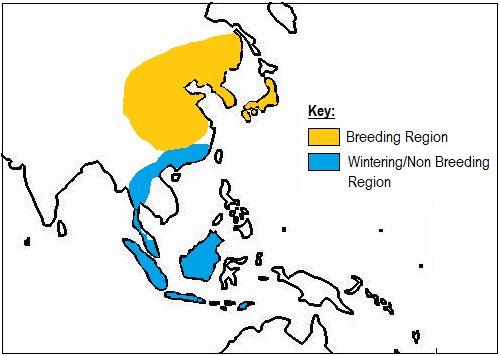Scientific Name: Lanius tigrinus
Other names: Thick Billed Shrike
Local/Malay Name: Tirjup Harimau
Measurement:17-19cm
Tiger Shrikes are birds from the shrike family, smaller and stocky predatory birds, with striped back, rump and flanks which gave its English and specific epithet, “tigrinus”, which means tiger-like.
Tiger Shrikes are fairly smaller shrikes compared to other two shrikes we have it in Malaysia. It has rather shorter tail and thicker bill, which gave it another name, “Thick Billed Shrike”. Adult male has grey head, crown, nape and mantle. Lower mantle, scapular, back, rump and upper tail coverts are rufous brown with black barring. Wings are dull brown with some pale tipped feathers. Tail is reddish brown, graduated and with pale tips. Underparts are white with barring on the flanks. Bill is heavy, black tipped with paler base. Eyes are dark brown. Adult females are paler than males, with browner with less grey crown and nape. Black “mask” is less prominent and lore is paler. Sometimes appear with short white eyebrow. Underpart is buff with strong barring on the belly and flanks. Juvenile Tiger Shrikes have reddish brown with black barring on its crown, forehead, lores and ear coverts. Heavier barring on the back, rump and upper tail coverts. Underparts resemble those of female tiger shrikes.
Moult twice a year: (i). Post breeding moult during late summer at its breeding region – July to September, (ii). Pre breeding moult, at its wintering region, between December to April. In Malaysia we have two age groups arrive during autumn: (i). First winter: No “facemask”, head and nape entirely brown with heavy barring. (ii). Adult: head and nape have a combination of grey and brown barred feathers. “Facemask” partially developed. The extent of post breeding moult is variable.
Status and Distribution:
Fairly common winter visitor (non-breeding) in Peninsular Malaysia, Sabah and Sarawak – September to May. Immatures are more common in Peninsular Malaysia. Refer to Picture 1 for the tiger shrike’s global range.
Confusion
Species:
At
times confused with first winter/immature brown shrikes due to the barred
plumage. Tiger shrike can be distinguished from brown shrikes by their smaller
size, heavier bill and shorter tail. Its choice of habitat is
rather different since it prefers forest edges and much wooded areas compared
to the brown shrikes, which lurks around open grasslands.
Geographical
Variation:
None.
Monotypic
Behavior:
Habitat:
Forest
edge, orchards, wooded lands and country side. Also occurs at altitude up to 800m, especially at wintering regions.
Breeding:
Breeding season is
between May and July. Monogamous. Pair formation occurs during the northward
migration and also as soon as it arrives to its breeding ground. Males will
perch beside females and will be bowing up and down, move its head side by
side, with uttering a soft version of its usual call. A fast flight display
also will occur. Its very similar to the mating display of a Brown Shrike,
which led for hybridization between both species. Nest built by both male and
female. Nest is cup shaped and thick walled, made with twigs, grasses, weed
stems and roots. It is lined with fine grasses and moss. Nest is built in 5 to
7 days on a deciduous tree at 1.5 to 5 m high. 3 to 6 eggs are laid, which
varies in color (white/pinkish/pale orange/bluish green with brown/violet spots
and streaks).
Conservation Status:
Least
Concern. However, the population trend is declining, due to climatic changes
and habitat destruction as well as some are trapped and traded as cage birds.
References:
- Craig Robson, 2017, A Field Guide to
The Birds of South East Asia, Bloomsbury, London.
- Handbook to Birds of the World, Lynx Edicions, Barcelona, Collins, Grafton Street, London
 |
| A First Winter Tiger Shrike. Photo by: Terence Ang (Selangor) |
 |
| A Non Breeding Adult Tiger Shrike. Photo by: James Phang (Johor) |
 |
| First Winter Tiger Shrike. Photo By: James Phang (Johor) |
 |
| A Non Breeding Adult Tiger Shrike, holding its prey with its leg. Photo By: James Phang (Johor) |
 |
| A male Tiger Shrike - Non Breeding. Photo By: Sanjeev Gopalan (Penang) |


